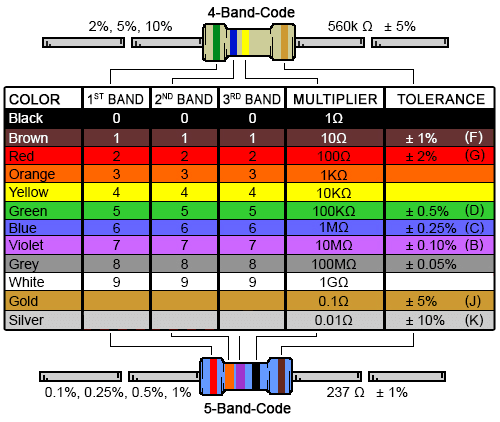
Week 1: Basic Introduction and Resistor Color Coding Lab
Introduction
A resistor is defined as an opposition to the flow of current. The basic unit of resistor is ohm. Resistors are devices that limit current flow and provide a voltage drop in electrical circuits. Because carbon resistors are physically small, they are color-coded to identify their resistance value in ohms. The use of color bands on the body of a resistor is the most common system for indicating the value of a resistor. Color-coding is standardized by the Electronic Industries Association (EIA).
Resistor values are often indicated with color codes. Practically all leaded resistors with a power rating up to one watt are marked with color bands. The coding is defined in the international standard IEC 60062. This standard describes the marking codes for resistors and capacitors. It includes also numerical codes, as for example often used for SMD resistors. The color code is given by several bands. Together they specify the resistance value, the tolerance and sometimes the reliability or failure rate. The number of bands varies from three till six. As a minimum, two bands indicate the resistance value and one band serves as multiplier. The resistance values are standardized, these values are called preferred value.
This is the basic introduction of this lab. File is attach which described working and lab procedure completely


